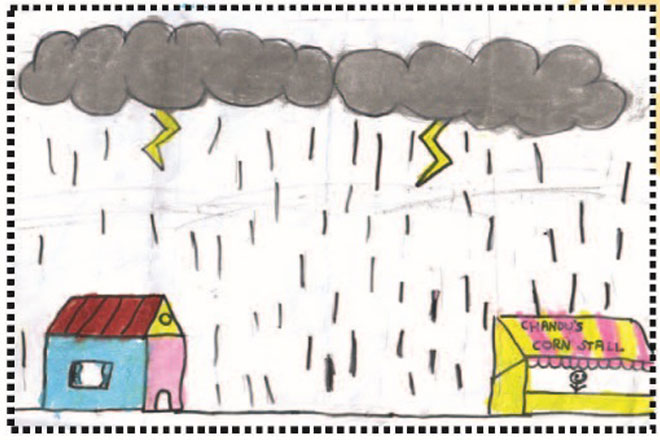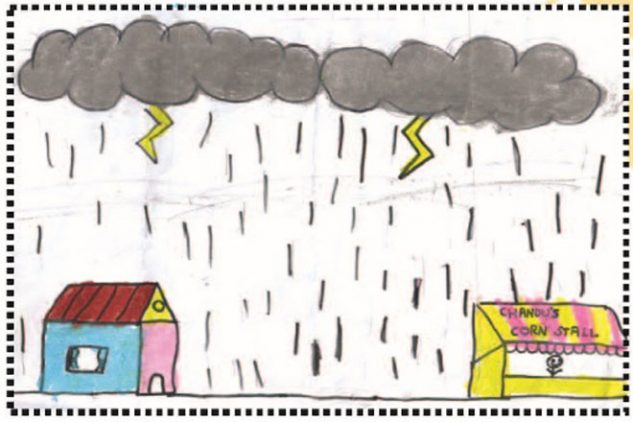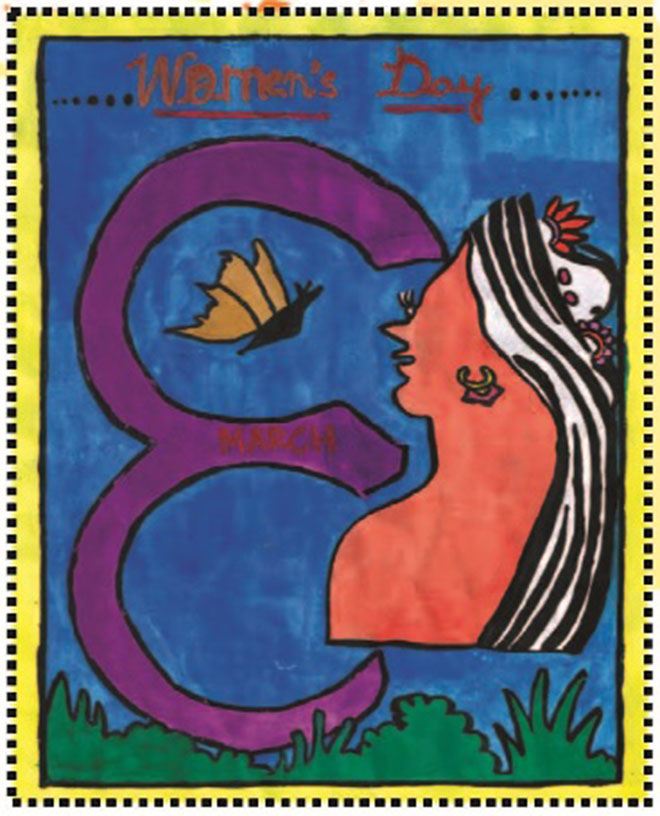



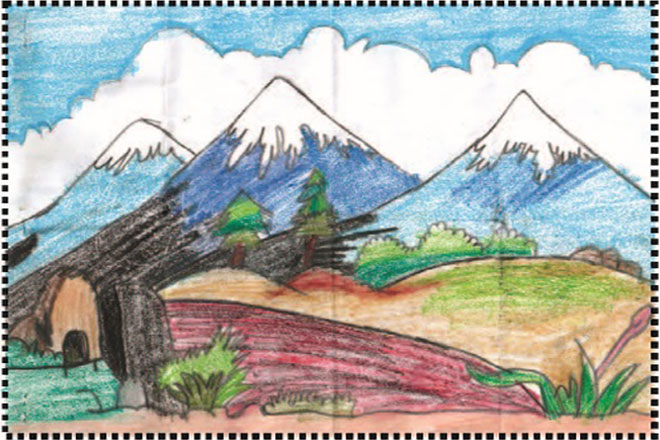

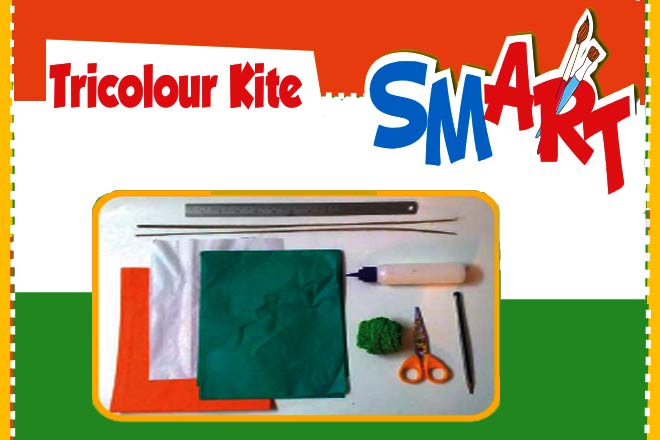
Let’s make a tricolour kite!
You will need: Kite papers (orange, white and green), thread, broomsticks, scale, glue, scissors and pencil.
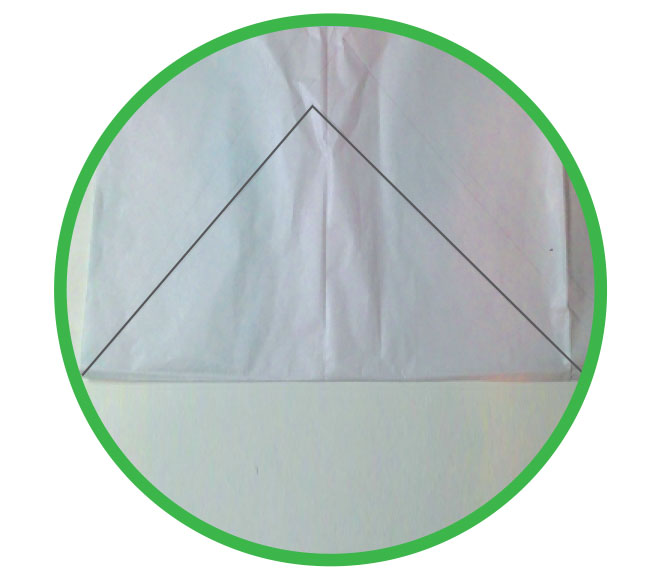
1. Fold the white kite paper in half. Draw a triangle on it as shown. Cut it and open it out.
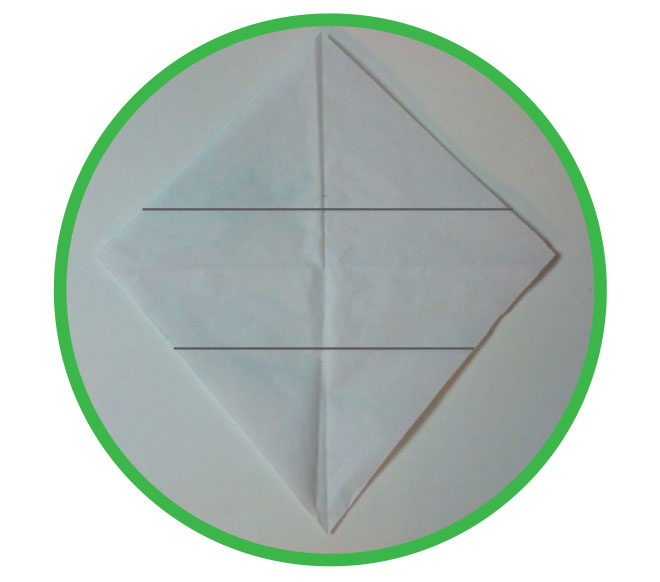
2. Divide the cutout into three equal parts as shown.
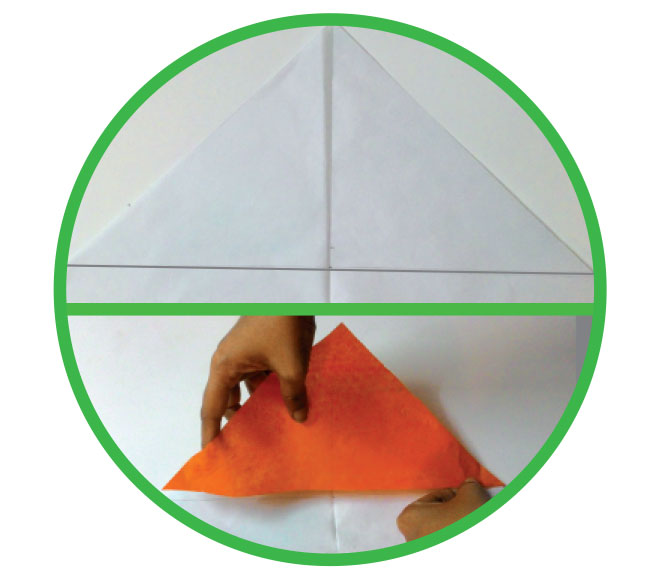
3. Cut a triangle from the orange kite paper of the same size as the one on the white paper and stick over it.

4. Similarly, cut a triangle from the green kite paper and stick it over the triangle at the bottom.
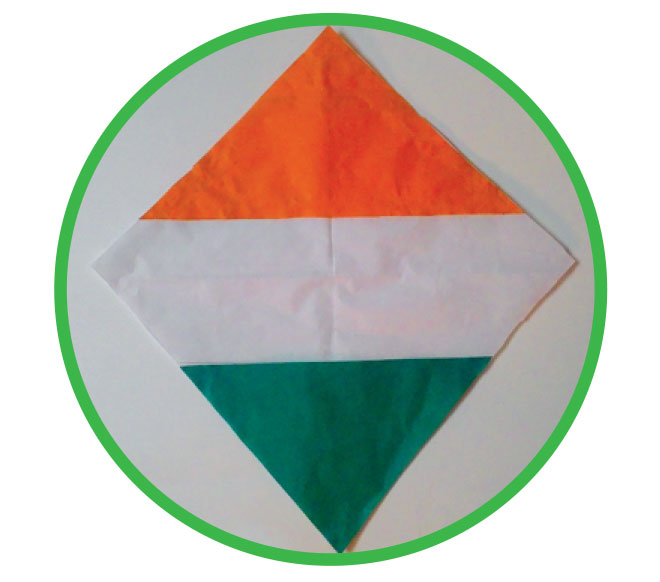
5. Your kite will now look like the Indian flag, but without the chakra in the center.
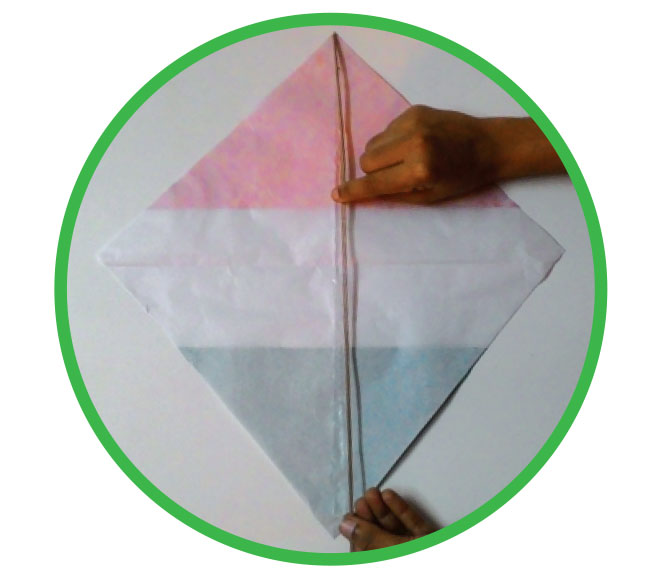
6. Turn your kite over and glue a broomstick across the center as shown. Cut the broomstick to fit the length of the kite.
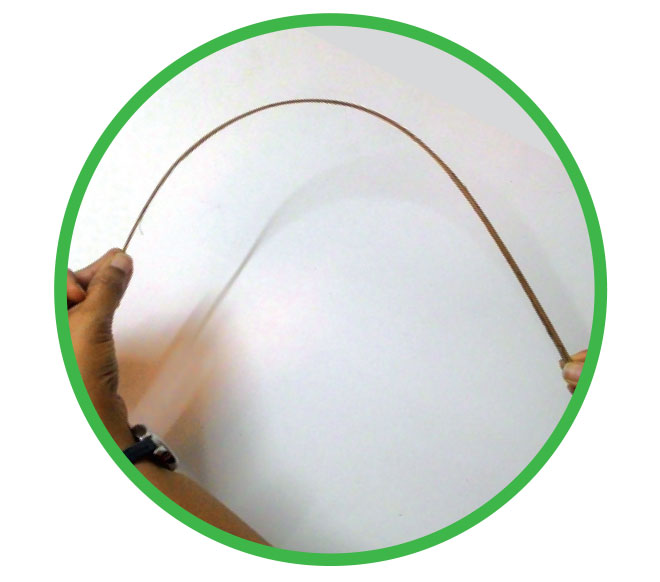
7. Slightly bend the second broomstick as shown.
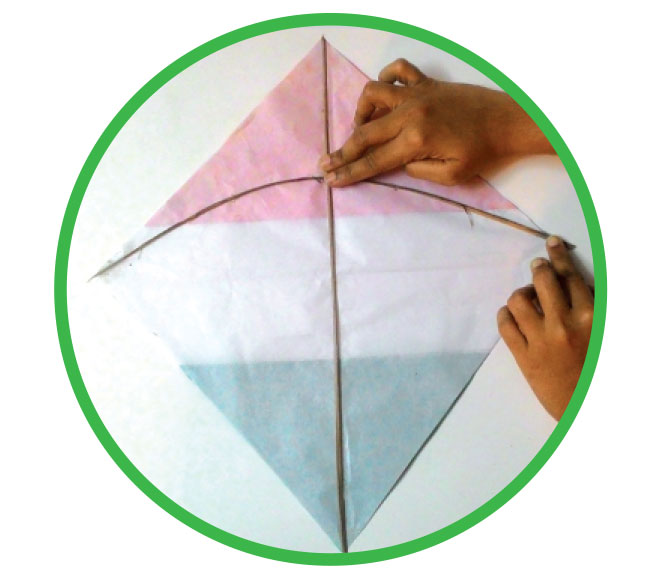
8. Glue it horizontally across the kite as shown.
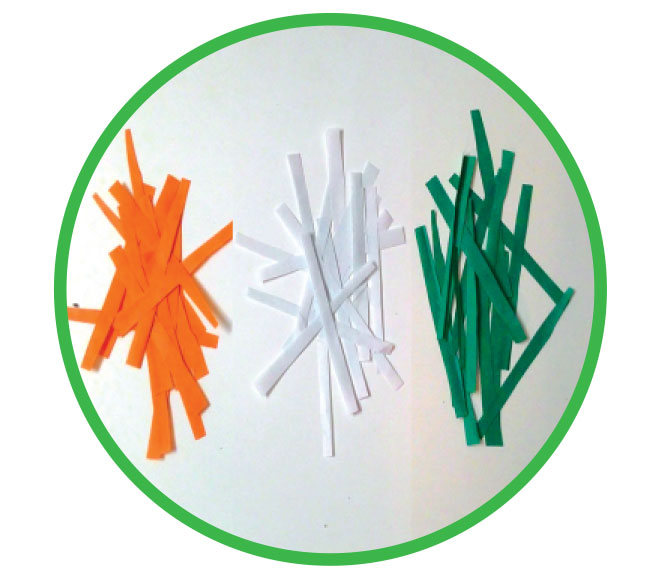
9. Make thin strips from orange, white and green kite papers.
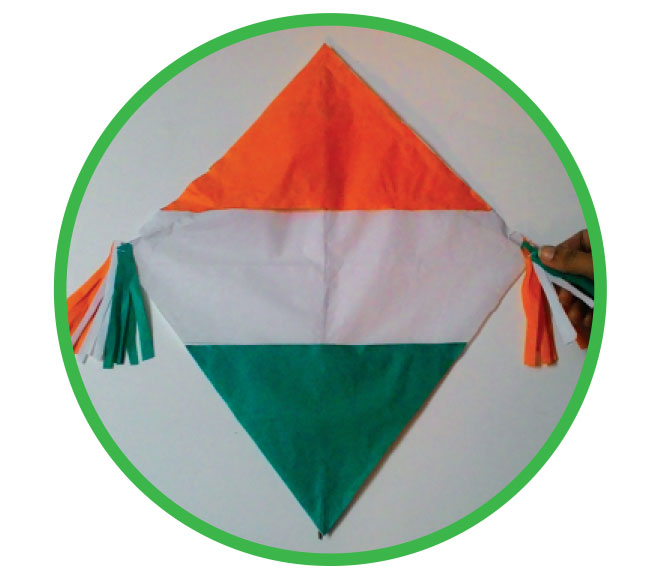
10. Bunch the strips together and glue them to both sides of the kite.
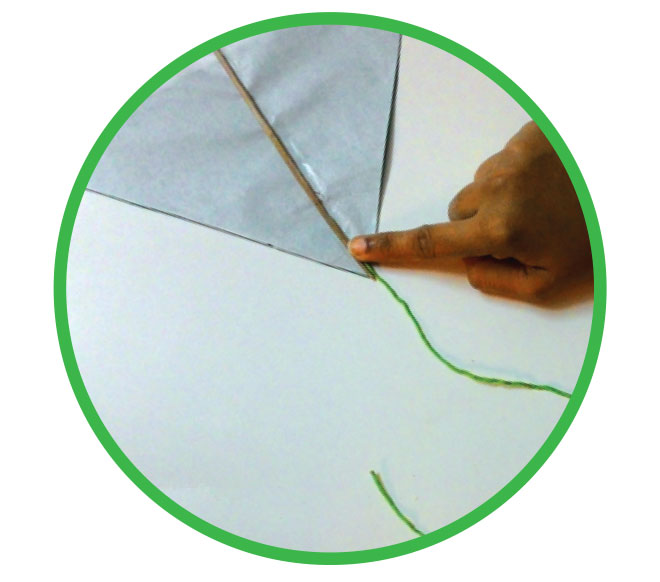
11. Glue a thread to the bottom tip of the kite.
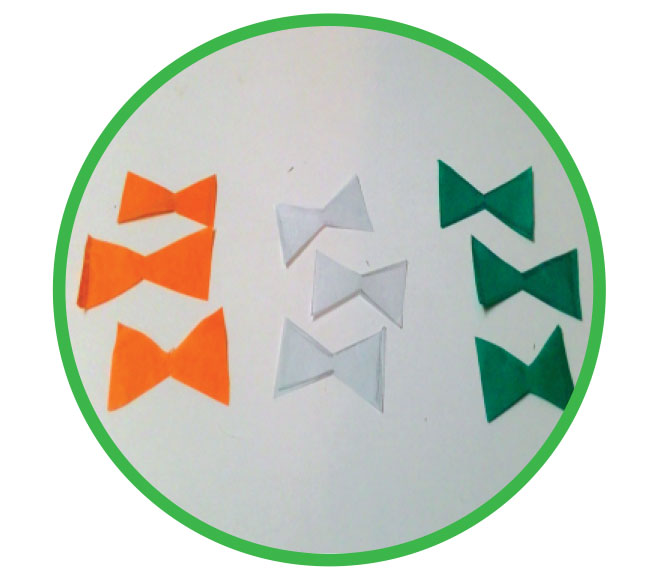
12. Cut out bow-shaped bits from orange, white and green kite papers.
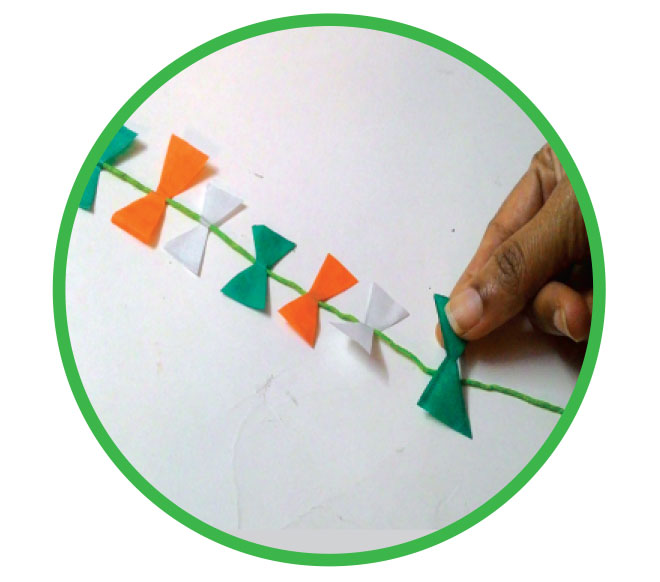
13. Glue them along the thread in the order of the tricolour.
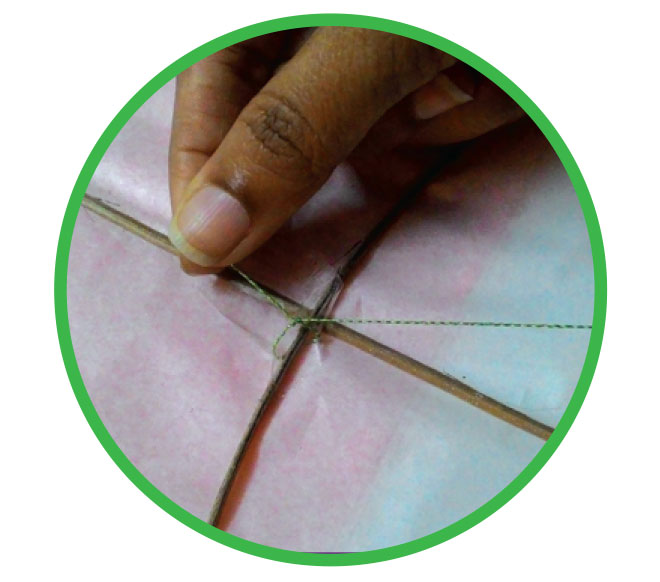
14. To fly the kite, tie one end of a spool of thread to the joints of the kite’s frame.
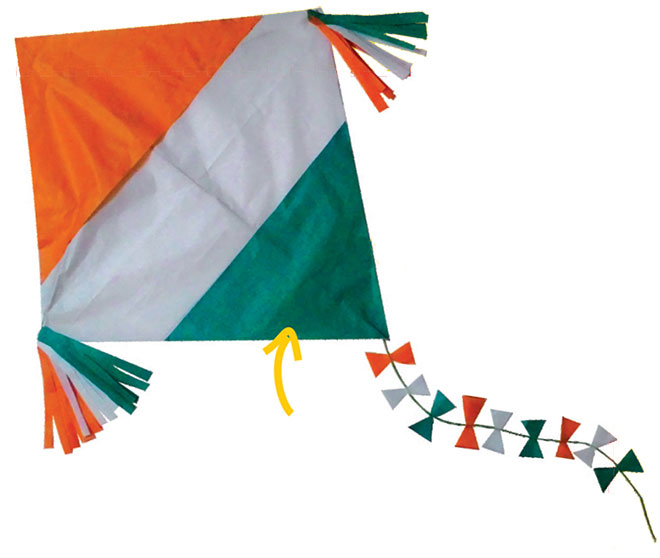
Your kite is now ready to fly!
Make your own Champak bookmark and send us photos at writetochampak@delhipress.in

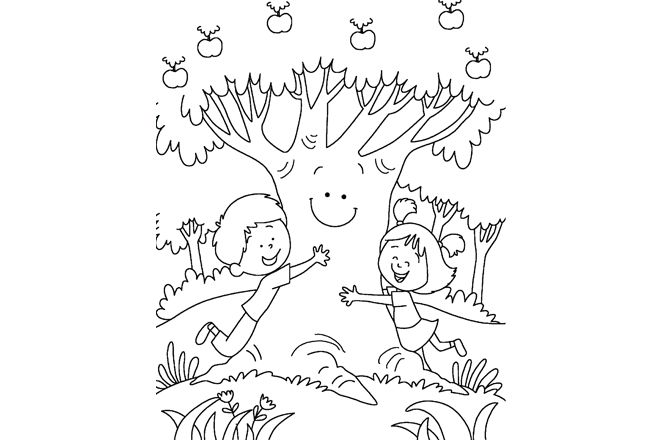
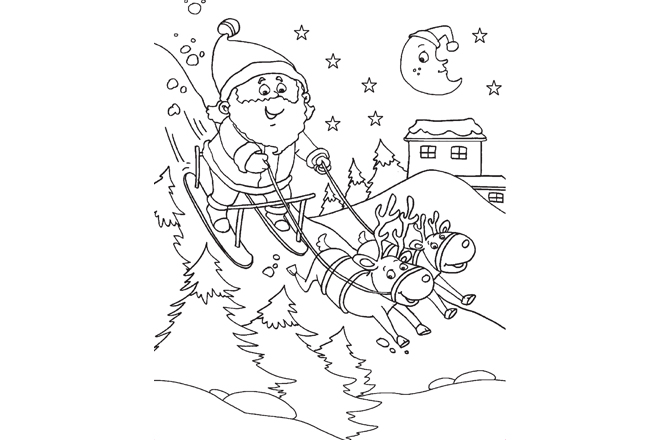
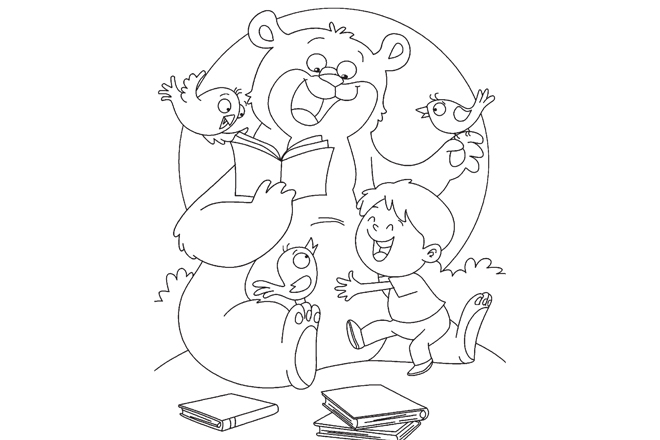
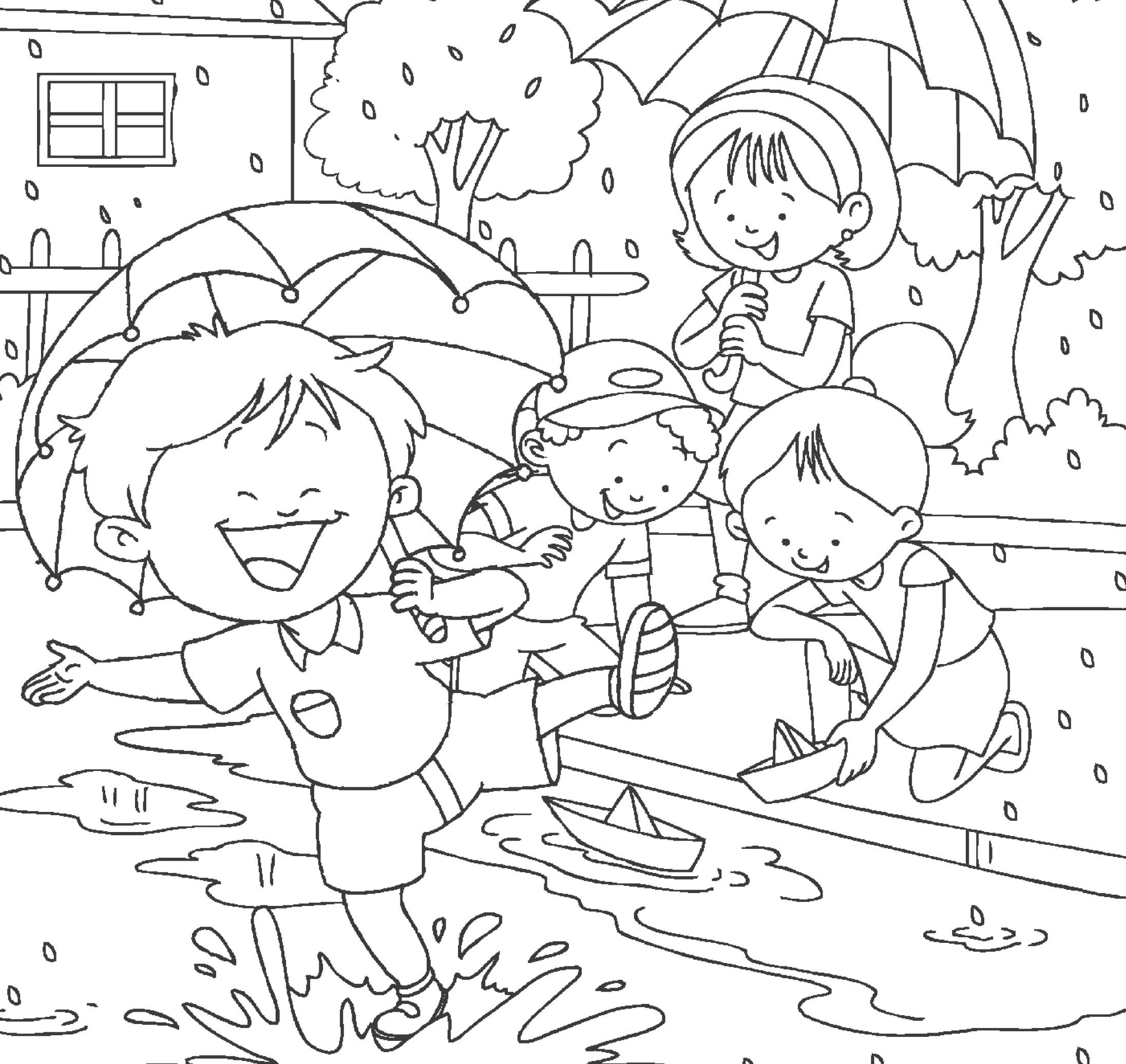
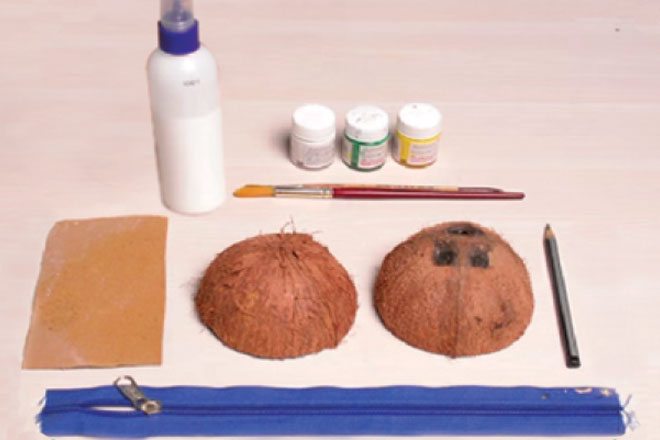
Store your valuables safely in this coco-box!
You will need: Two coconut shells, acrylic paints, brushes, sandpaper, glue, zip, pencil
Tip: Stick sequins to make intricate and shiny designs.
How to make it:
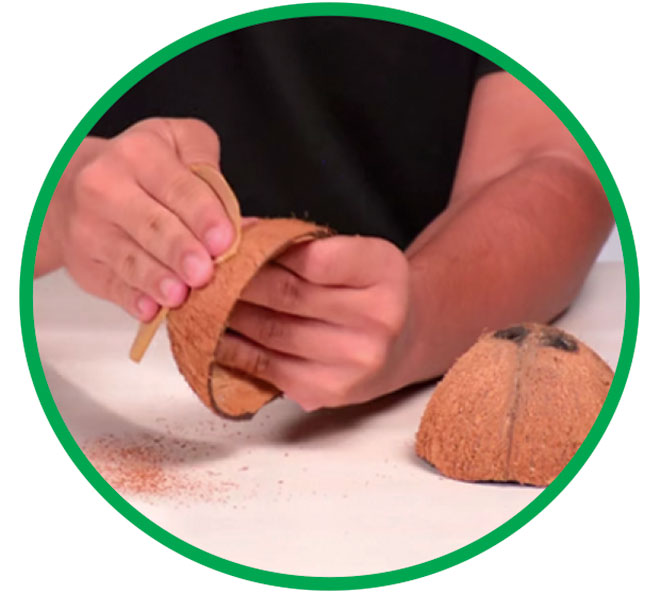
1. Pluck all the hairs from the coconut shells. Smoothen the coconut shells using the sandpaper.
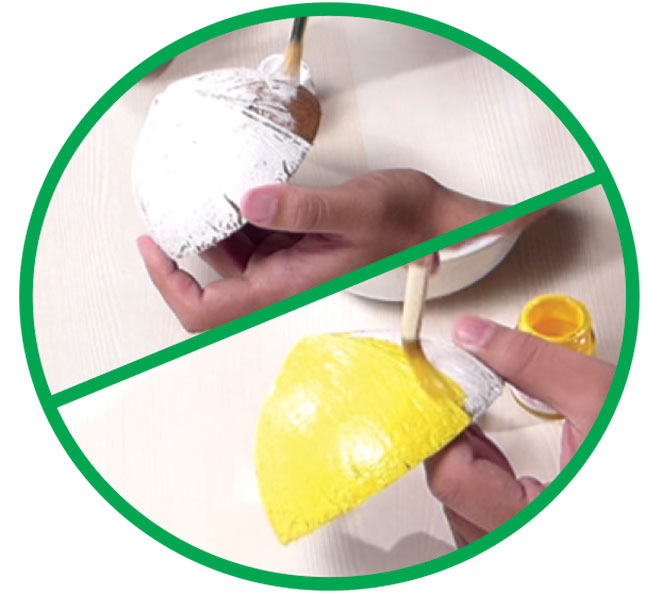
2. Apply a coat of white acrylic paint as base. Then apply another coat of bright colour.
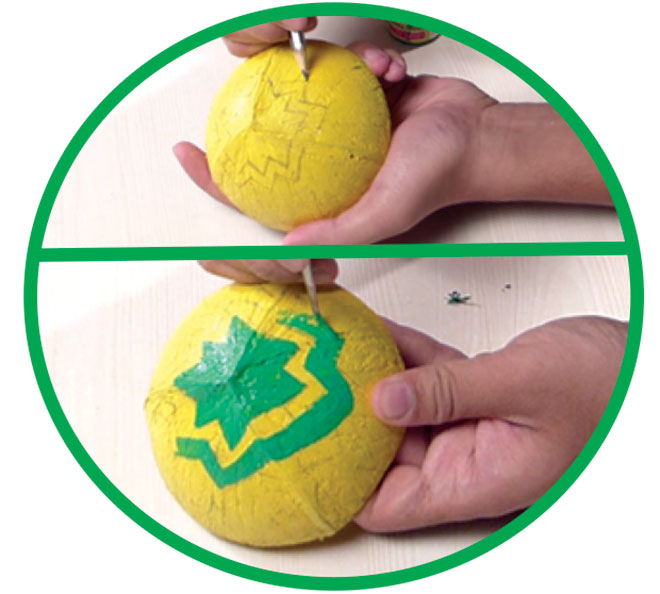
3. Draw a design with a pencil. Then paint on the design in another colour.
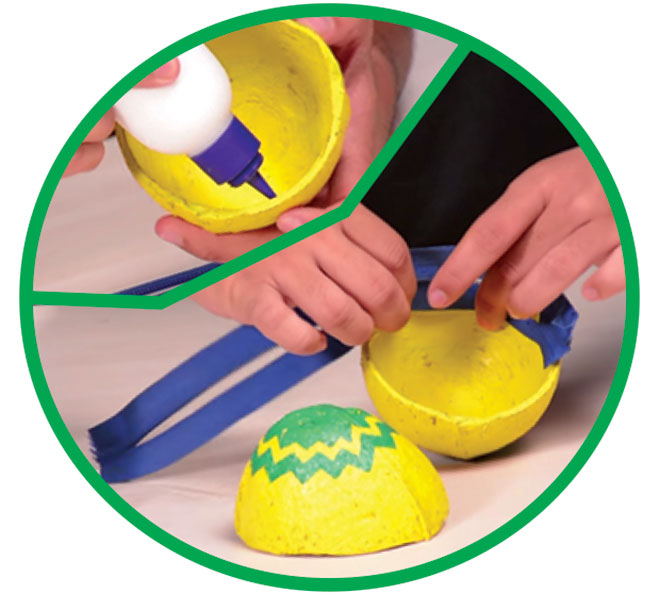
4. Apply glue on the inner side of a shell. Stick one end of the zip on the shell. The zip should be closed on both sides and open in the middle.
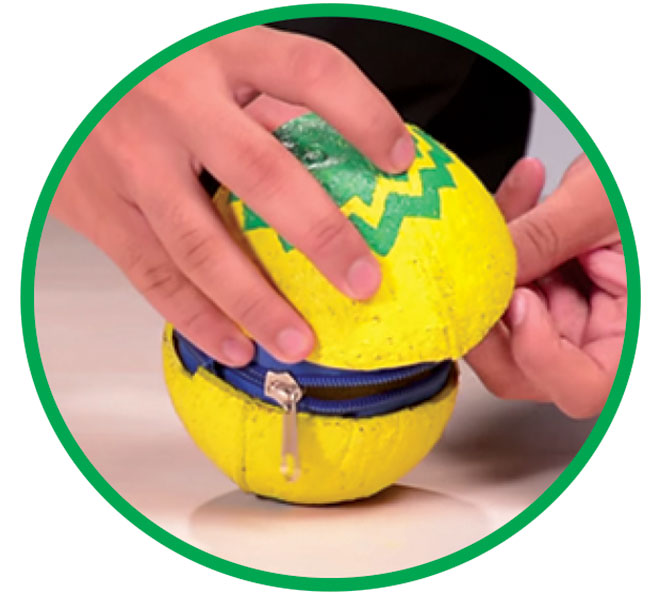
5. Do the same for the inner side of the other coconut shell.
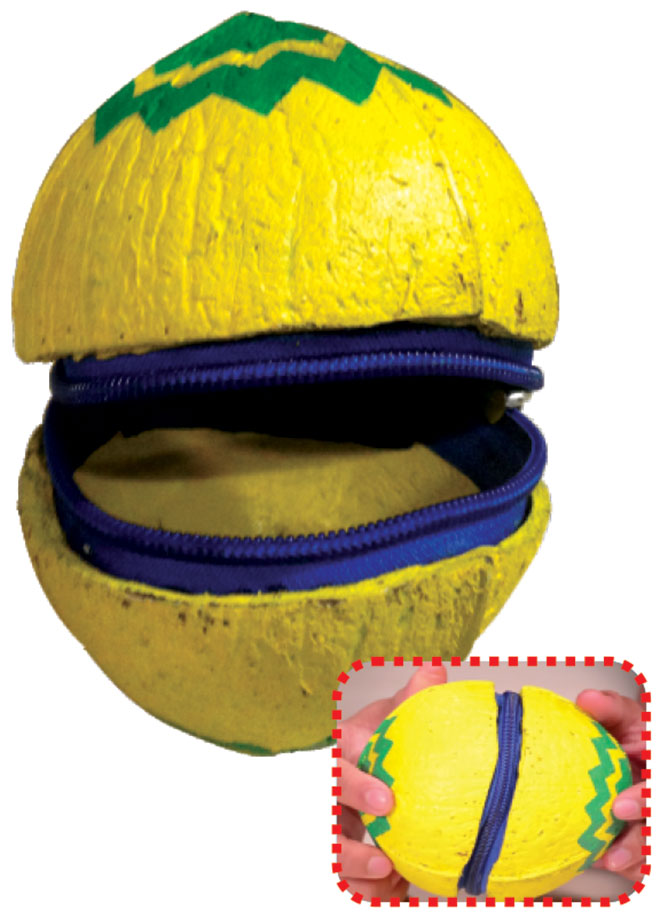
Now you have a place to store your chocolates, coins or jewellery!
Make your own Champak bookmark and send us photos at writetochampak@delhipress.in
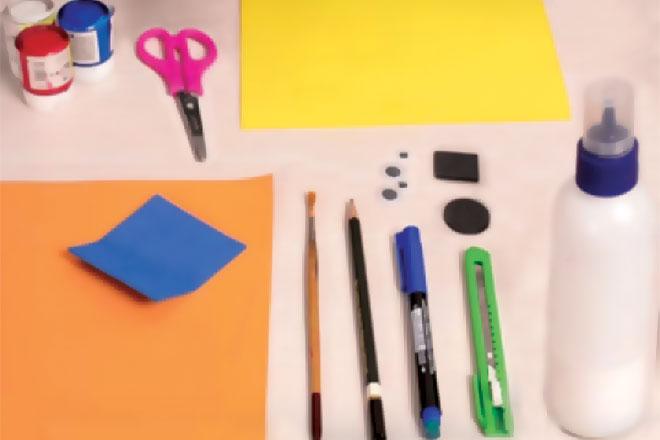
Turn your favourite Champakvan characters into bookmarks.
You will Need: Chart paper, foam sheets, acrylic paints, brush, cutter, black sketch pen, magnets,googly eyes, glue, pencils and scissors.
Tip: You can also use your Cheeku bookmark as a fridge magnet.
How to make it:
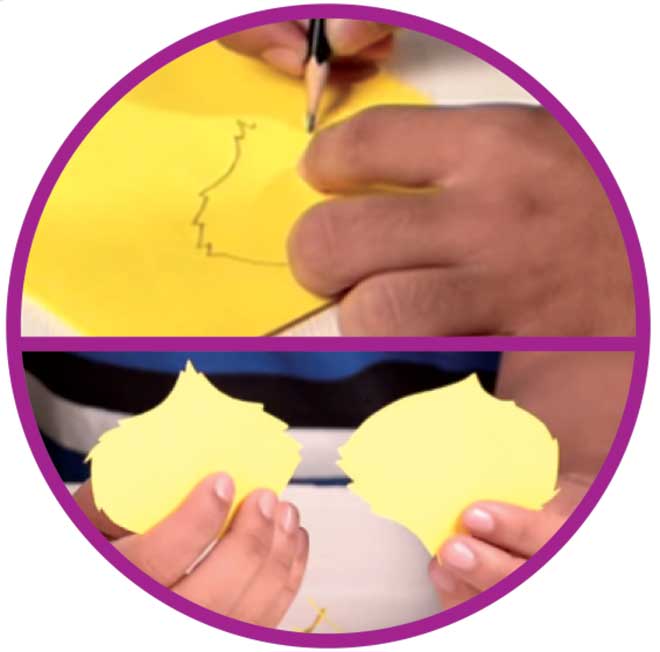
1. Fold the chart into two. Draw an outline of Cheeku’s head on it and cut it out. You’ll get two cutouts.
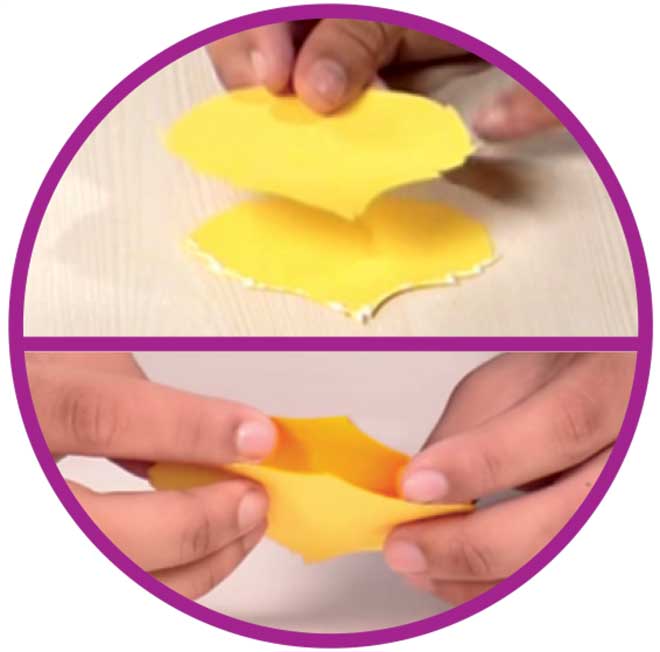
2. Stick the top half of the two cutouts. 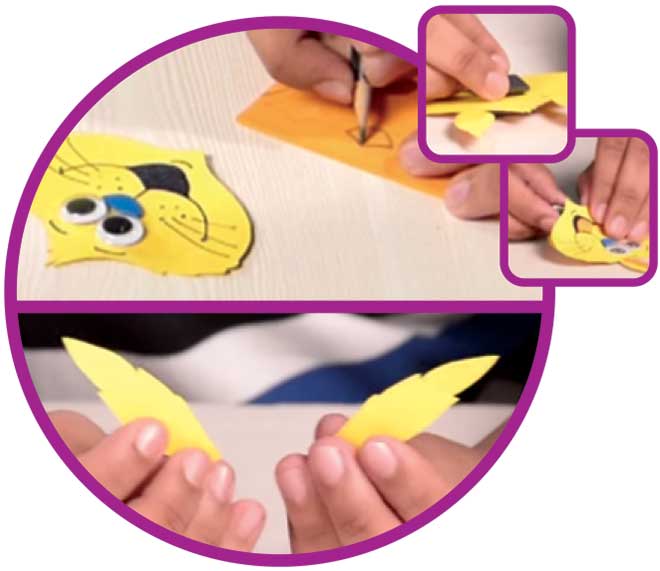
3. Paste googly eyes. Make nose and teeth using foam. Draw the mouth, eyebrows and whiskers. Cut out ears and stick them. Stick a magnet on the back of Cheeku’s head and another inside it. 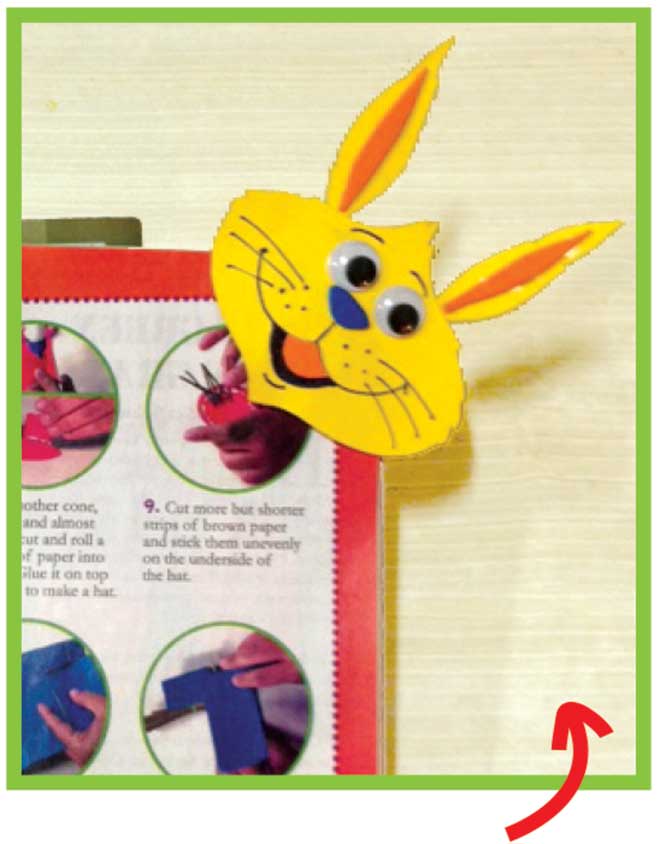
Your Cheeku bookmark is ready! Place it on the corner of the page of your book!
Make your own Champak bookmark and send us photos at writetochampak@delhipress.in
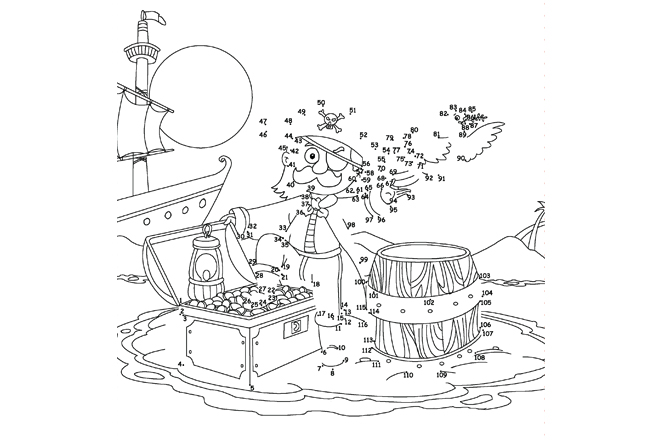
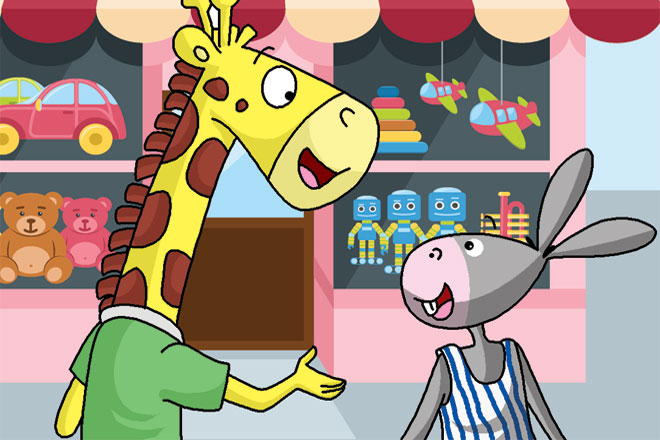
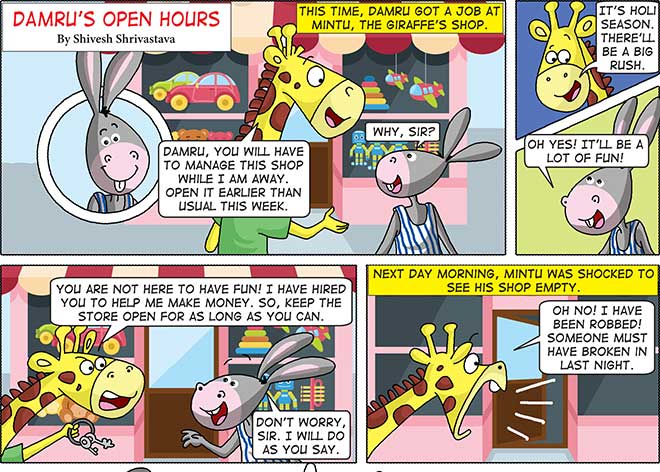
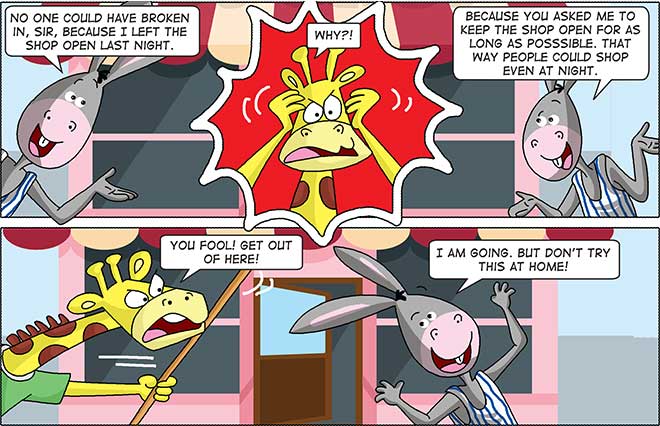
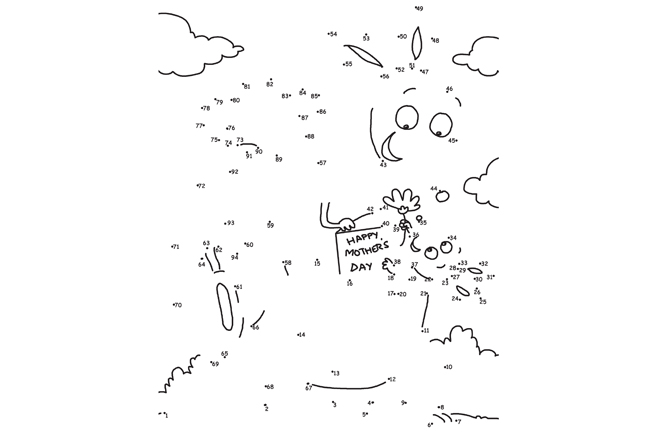
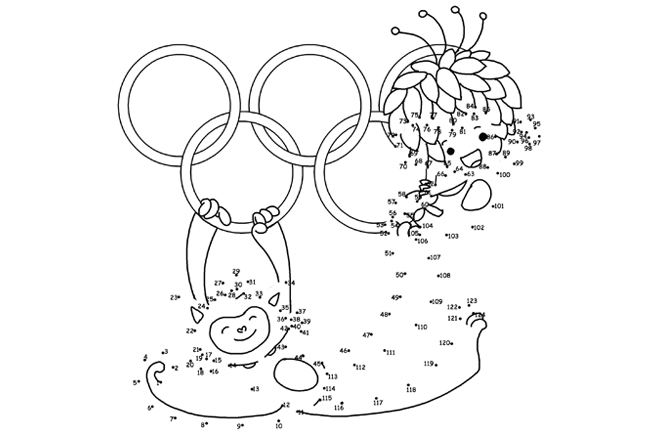
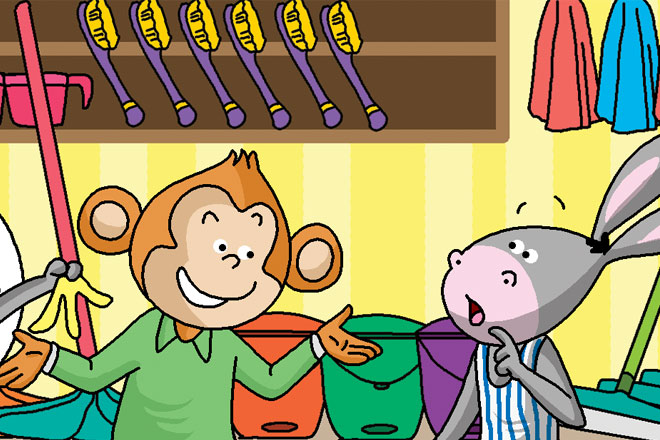
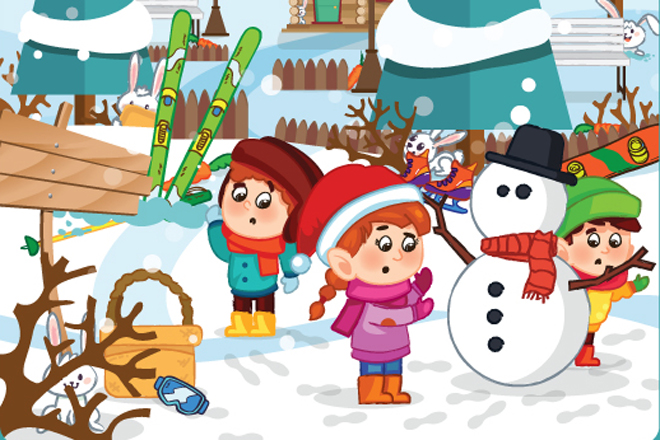
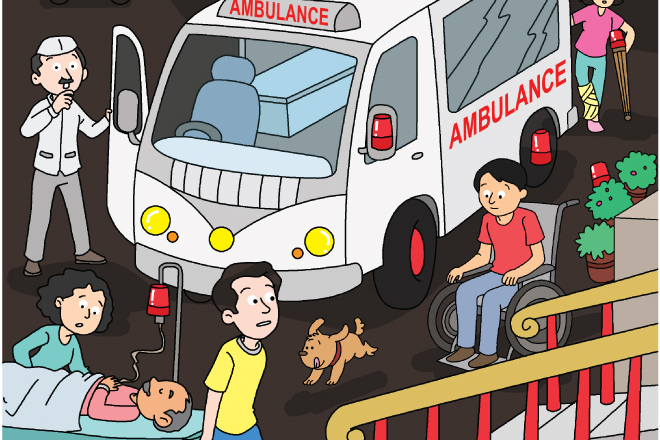
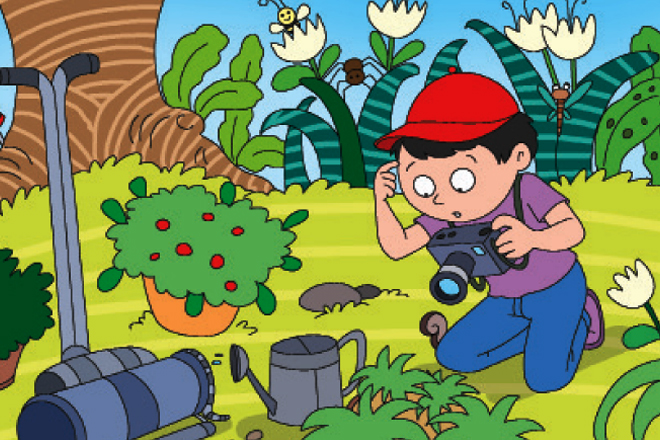
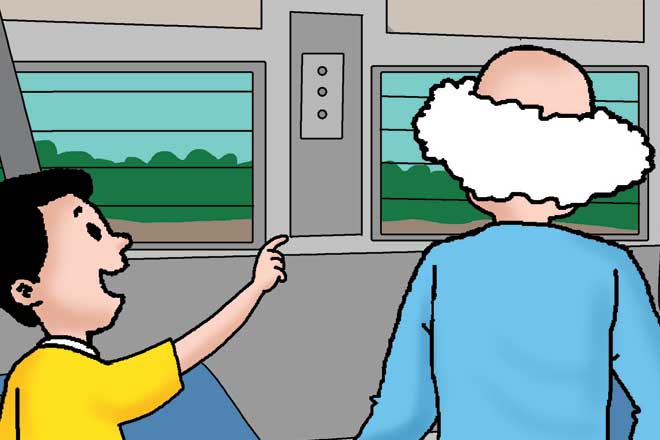

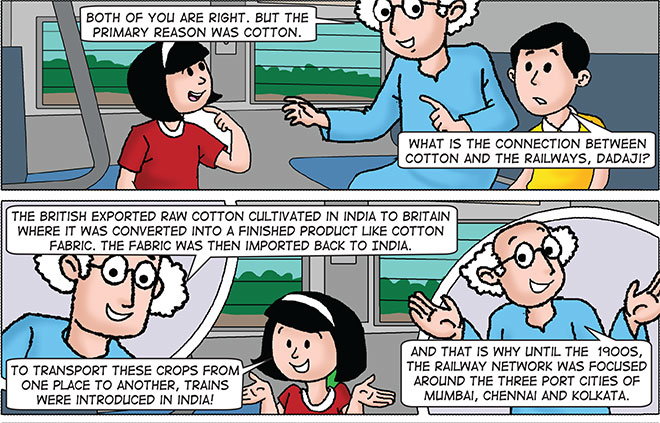

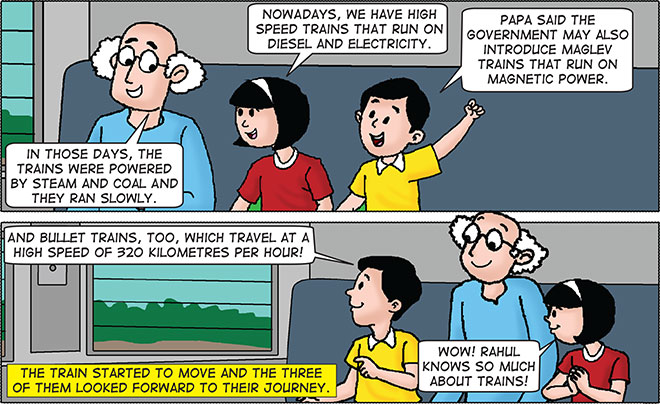
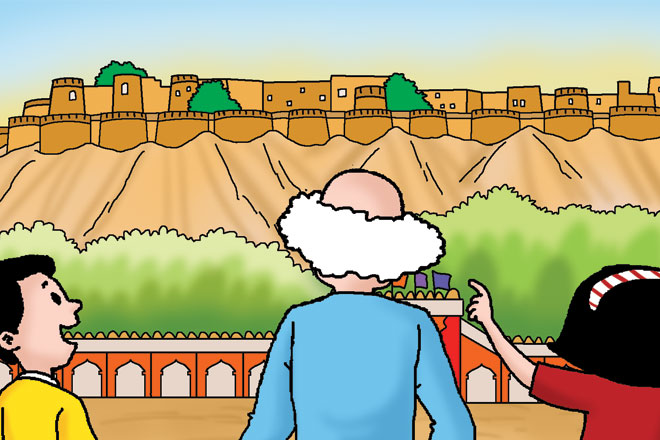




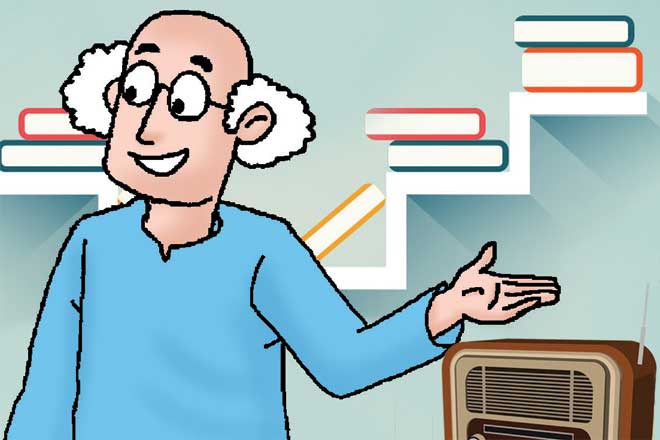
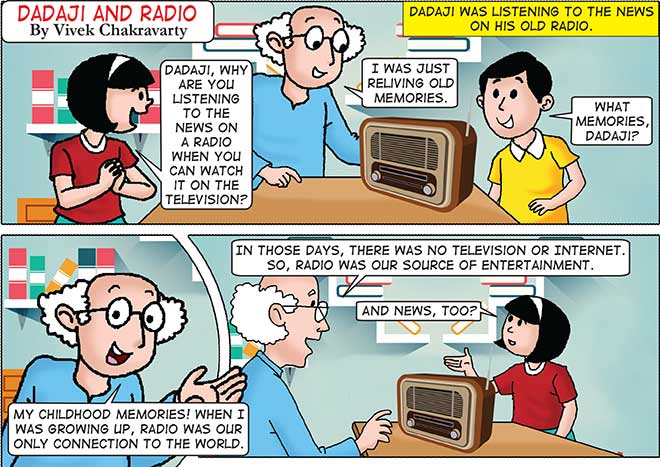
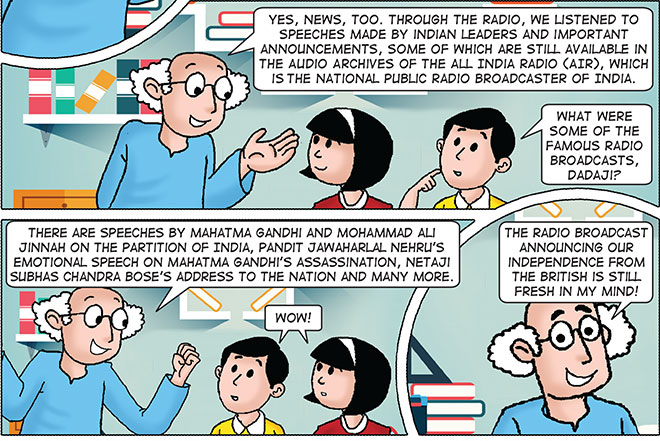
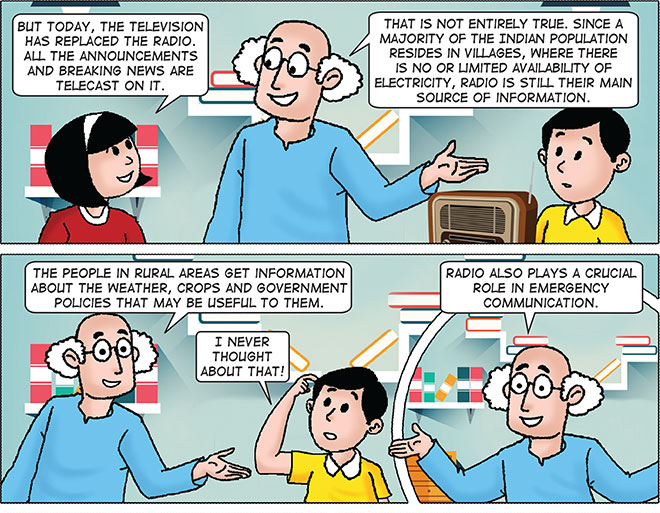
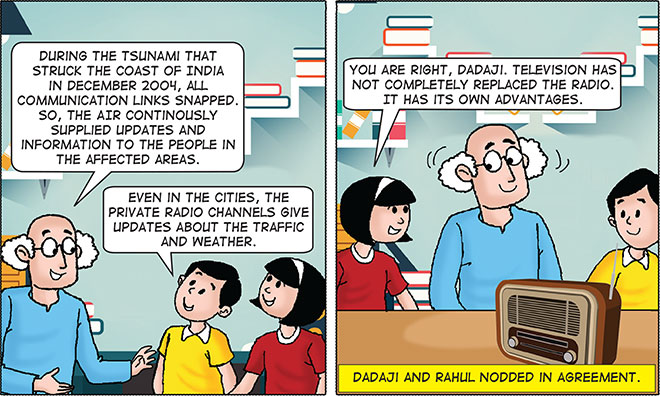
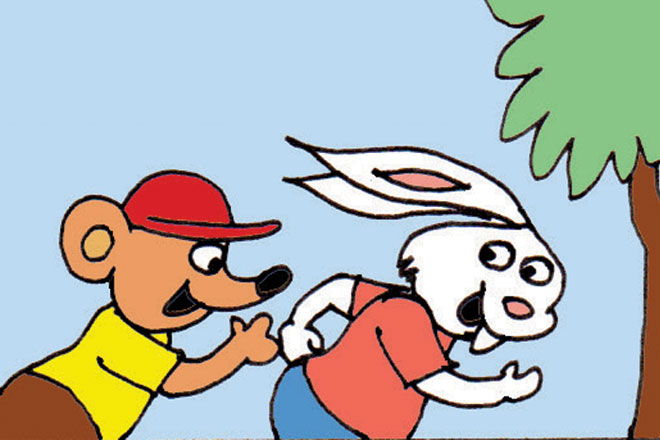
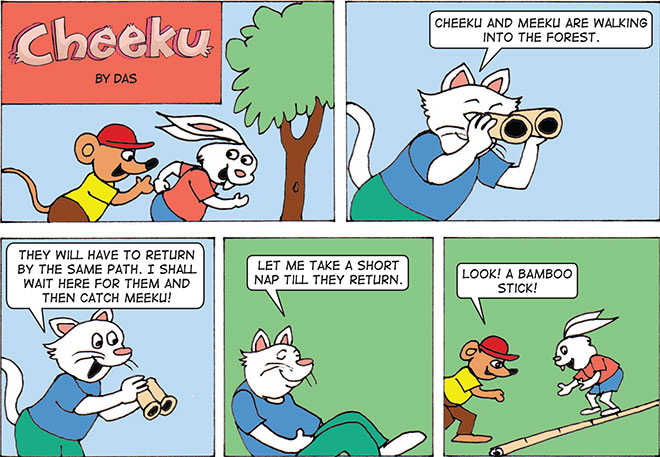
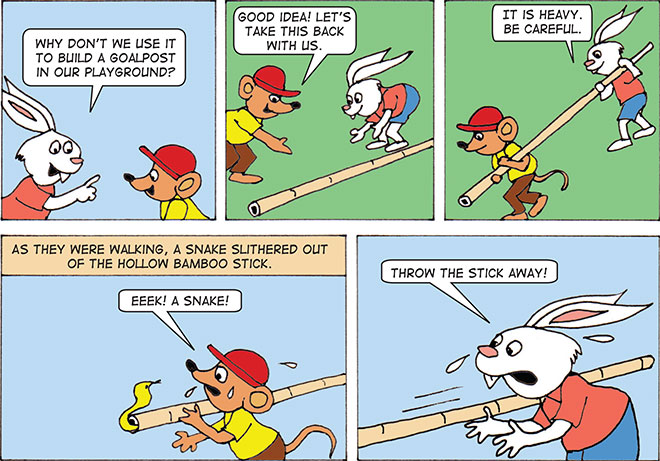
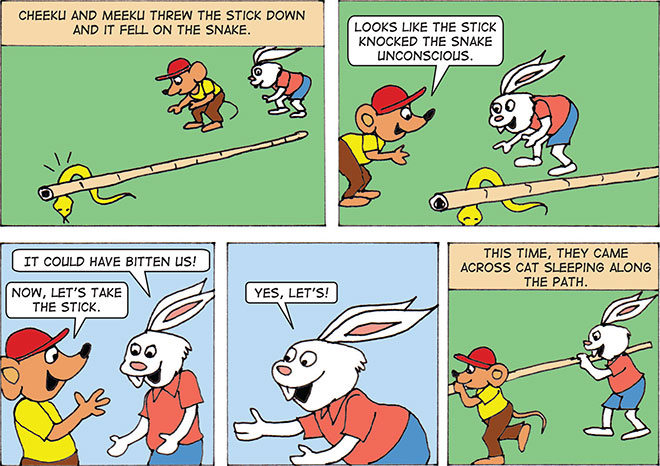
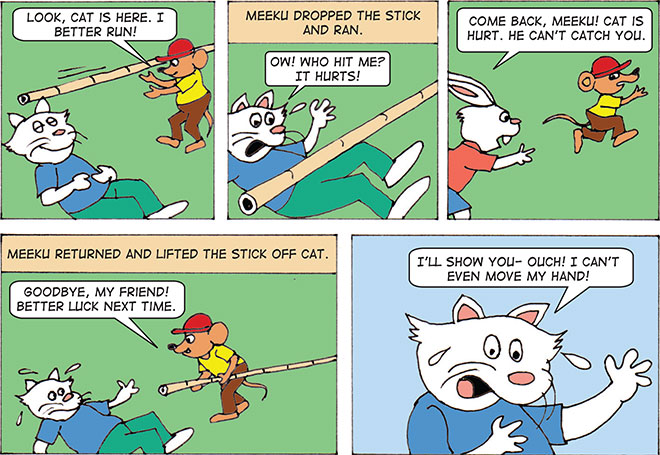
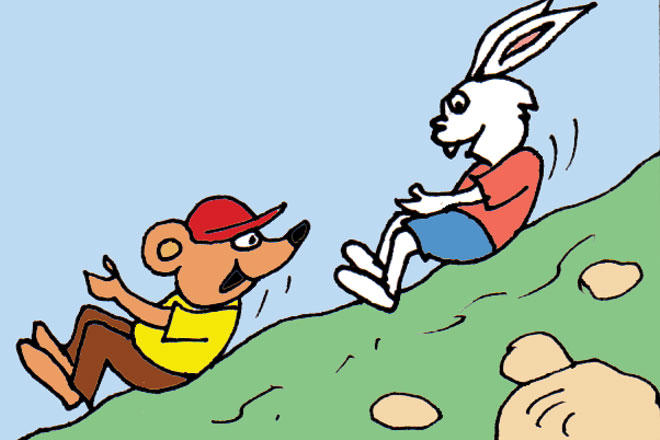
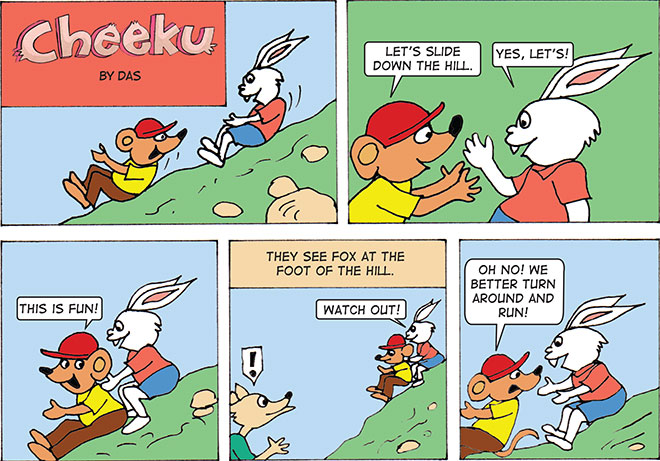
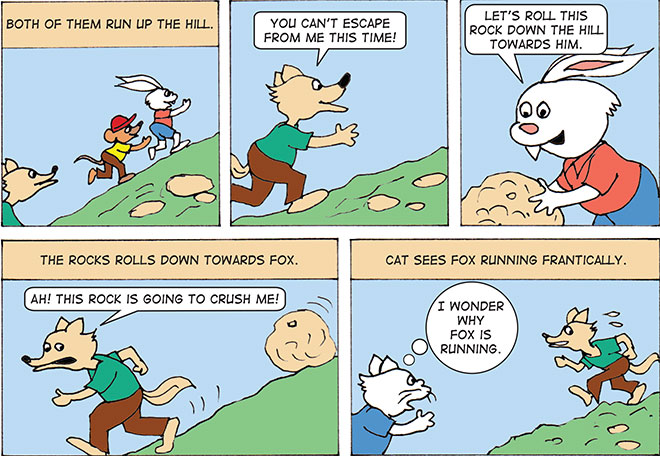
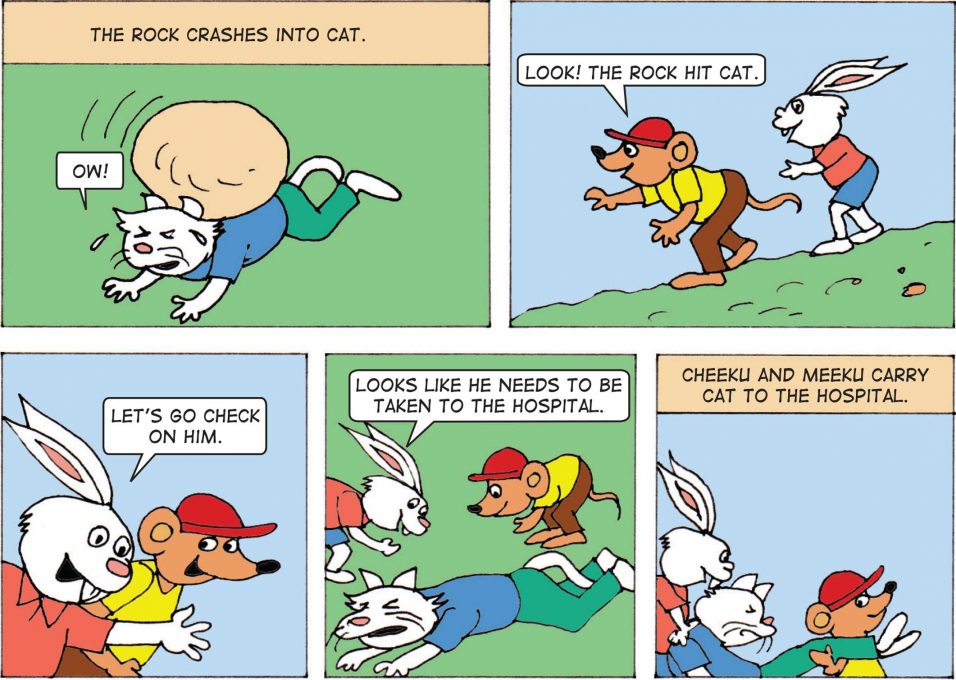
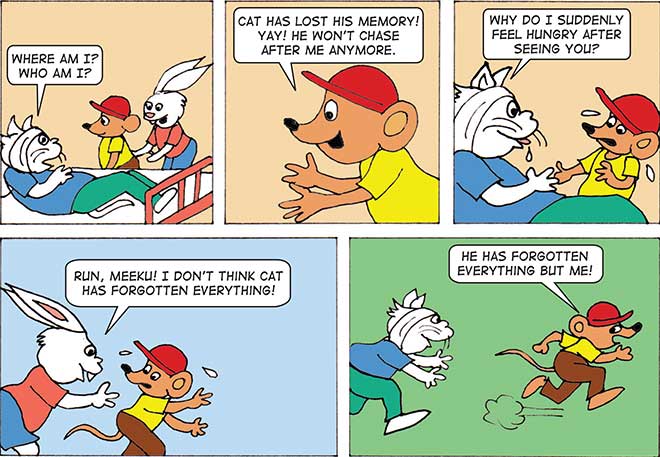
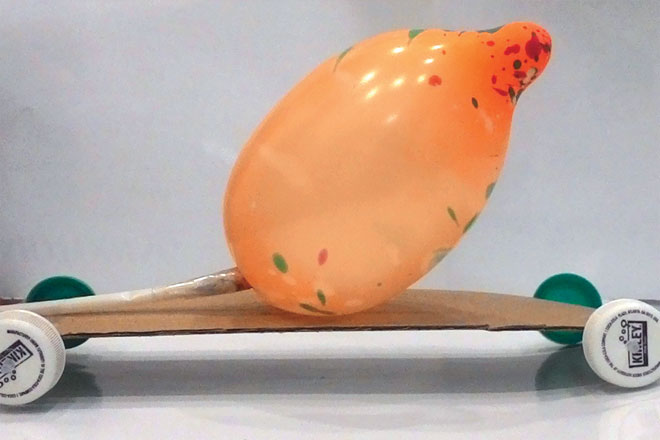
Stuff:
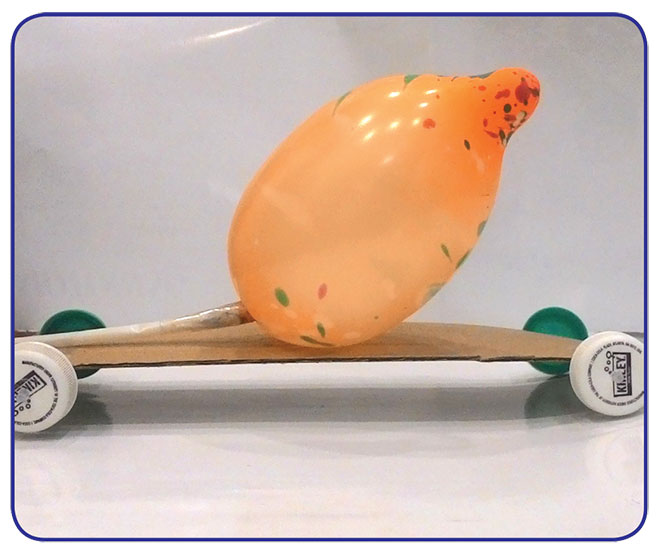
Do
Take a sheet of cardboard that has a width shorter than the length of the ball pen refill that you have.
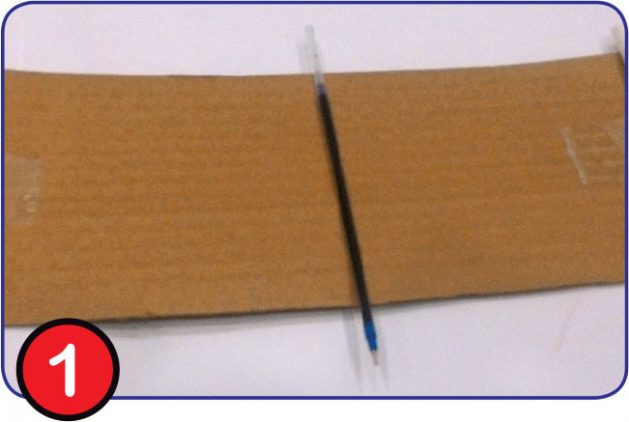
Attach two straws on both ends of the sheet using tape.
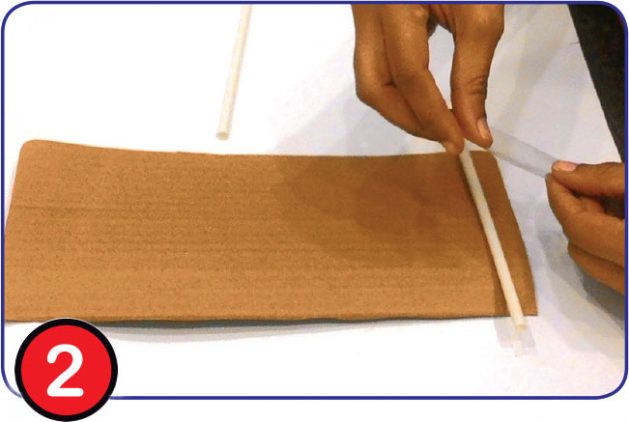
With the help of an adult, make holes in the centre of two bottle caps big enough for a refill to go through them.
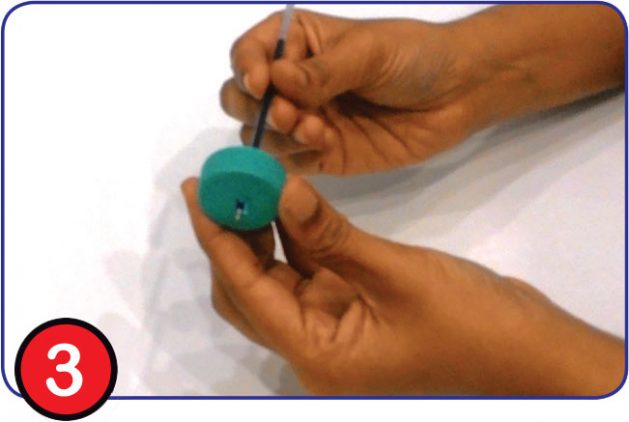
Insert one end of the refill through the straw and attach to a bottle cap as shown. Repeat the step for the second straw.
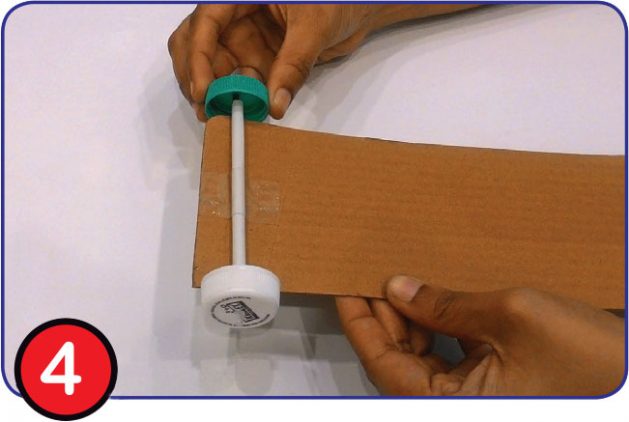
Take the third straw, put the balloon in it and seal with a tape. Stick the straw vertically across the sheet of cardboard as shown.
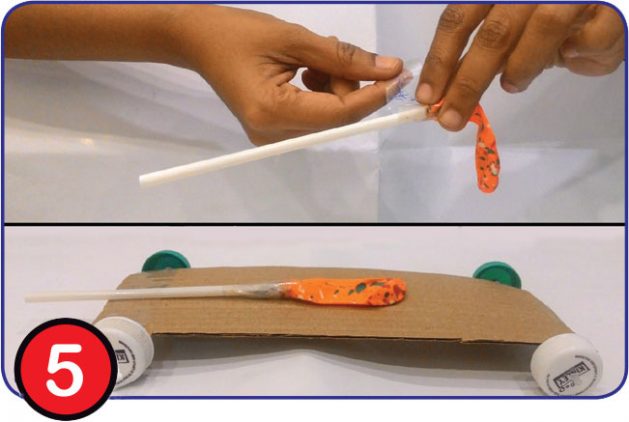
Inflate the balloon by blowing in through the straw and cover the open end of the straw with a finger to hold the air in. Then lift the finger and release the car on the floor or any flat surface.
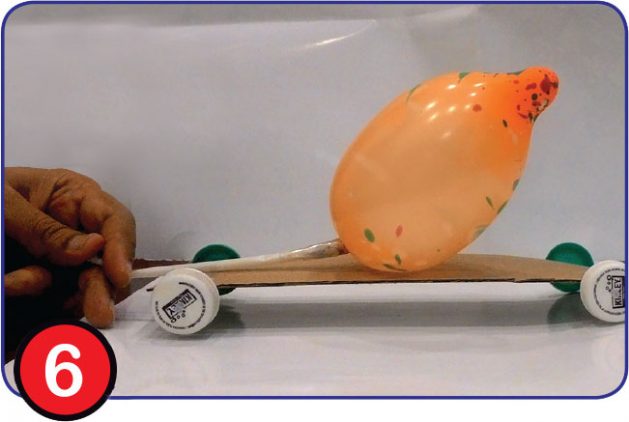
See
When you remove your finger, you will see the air escaping through the straw and pushing the car forward.

Lets Find Out
What is a compressed-air vehicle and how does it work?
Since petrol and diesel are limited resources and their reserves may soon run out, experts are looking at alternative sources of energy to power vehicles. While electric and hydrogenpowered cars are the popular alternatives, car manufacturers are also designing compressedair vehicles (CAV). Much like our little balloon car, the CAV has air stored in a tank, which is released in a controlled manner to move the car forward. While some designs come with a little electric motor that compresses the air and stores it in the tank, other designs involve setting up compressed air stations similar to petrol stations.
Think About
What makes the car move forward?
When the air is released from the balloon, it is squeezed out through the narrow opening of the straw. This builds a lot of pressure causing the air to exit with a lot of force, thereby pushing the car in the opposite direction. It is similar to how when you partially block the opening of water hose, the water gushes out with greater force and travels farther.
By attaching the balloon to the straw, we ensure that the air is released in a controlled manner, which makes the car go in a straight line.
This experiment illustrates physicist Isaac Newton’s Third Law of Motion which states that, “Every action has an equal and opposite reaction”. Here, the air escaping the balloon is the action, while the car moving in the other direction is the reaction.
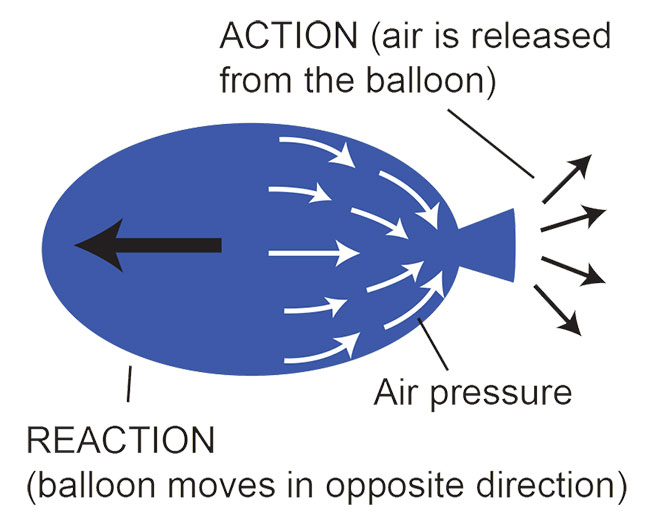
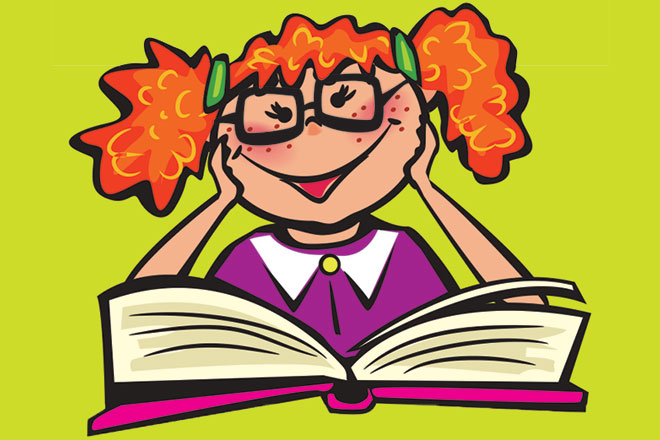
When we have to speak or write, we use a language. A language is a system of communication that consists the use of vocal sounds and/or written symbols like alphabets.
Researchers believe that spoken means of communication began around the time Homo sapiens evolved in Africa. Homo sapiens are modern humans who evolved around 2,00,000 years ago and had the modern skull shapes and vocal chords enabling the development of language from sign to oral. Today, there are 2,700 languages with over 7,000 individual dialects spoken around the world.
Researchers say that languages that were spoken before 5th century BC are considered as ancient languages. For example, Ancient Greek and Latin are ancient languages but they are no longer in use. But some old languages like Tamil and Arabic are still alive as they are actively spoken in many parts of the world.
Let’s take a closer look at some of the oldest languages of the world:

Sanskrit- This language is known as a founding language as many other languages spoken in India (like Hindi, Kannada and Malayalam), Pakistan, Sri Lanka and Nepal have evolved from it. Though it is not in popular use as an oral means of communication, it makes up a bulk of our written literature. Interestingly, several villages such as Mattur in Karnataka and Jhiri in Rajasthan are trying to revive the language by using it in their everyday communication.
Did you know?
A Sanskrit daily newspaper called Sudharma has been publishing since 1970 in Mysore.

Chinese– Chinese is the most spoken language in the world—around 16 percent of the world’s population. It is the official language of China, Taiwan and Singapore. Chinese is an umbrella term for a group of about 13 varieties of the Chinese language. The most spoken variety is Mandarin. The first written records of Mandarin appeared over 3,000 years ago. It has served as China’s national language since the 14th century.
Did you know?
There are 50,000 characters in the Chinese language, but you need to know about 2,000 to be able to read a newspaper.

Latin- Latin is an ancient language that was spoken by the Romans in ancient Italy. The earliest record of Latin dates back to the 6th century BC and its script was adapted from the Etruscan alphabet (a variety of Greek alphabet). Some modern languages that are widely spoken today like French, Romanian and Italian evolved from Latin. In fact, 60–70 percent of English words come from Latin. Though it is not in use anymore—except in Vatican City where it is used as the spoken language—Latin is widely used in the scientific and legal community. In Botany, every species is given a Latin name beside a modern one. For example, the Latin name of the rose is Rosa rubiginosa.
Did you know?
Many words used in Science and Medicine were created from Latin words or are Latin words. The word ‘bacteria’ comes from the Latin word bacterium.

Greek- It has the longest documented history of any living language—the language has been in use for 34 centuries, making it the oldest spoken language in Europe. The Greek language consists of 24 letters and the Greeks were the first to add vowels to their written language. The Ancient Greeks were the first Europeans to read and write with an alphabet. The word ‘alphabet’ itself comes from the first two letters of the Greek alphabet: alfa and beta.
Did you know?
Many English words that start with “ph” have Greek origin. For example, physics, philosophy.
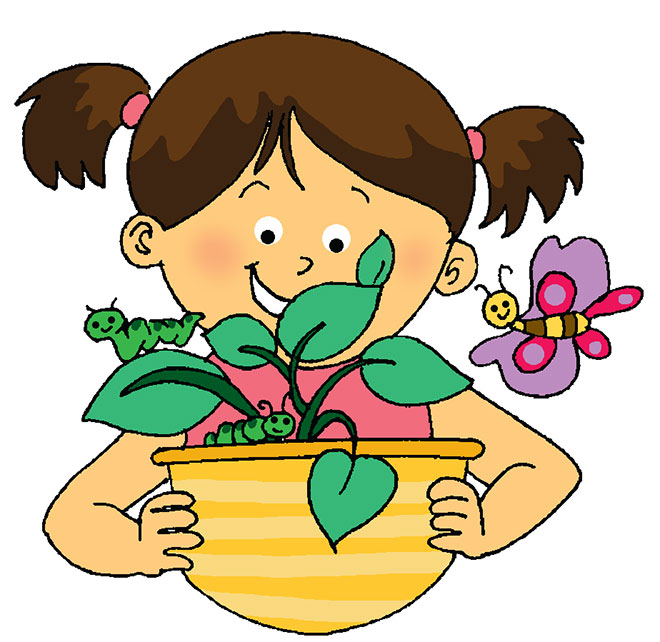
A caterpillar turns into a pupa and then becomes a butterfly. During the metamorphosis stage (the stage where the caterpillar becomes a pupa and is transforming into a butterfly inside the chrysalis or cocoon), the caterpillar does not eat anything. However, before turning itself into a pupa, the caterpillar eats a lot, which helps it survive through the metamorphosis without any food.
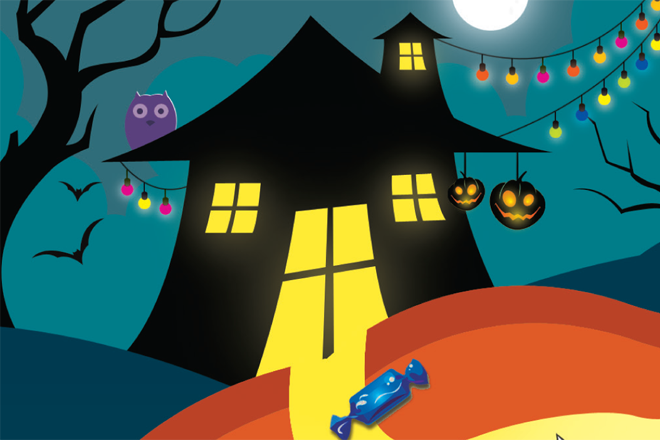
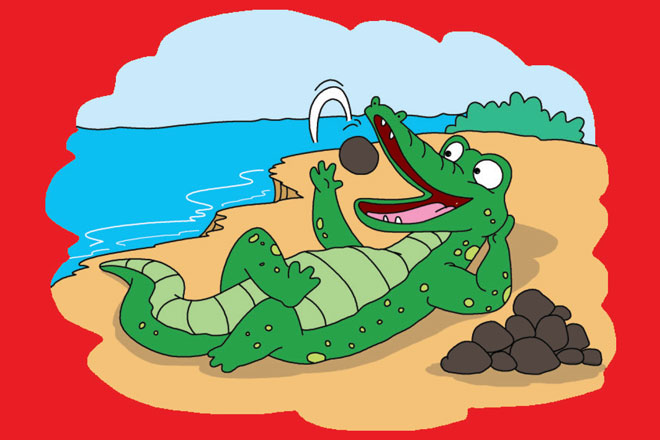
When we have eaten too much or when our tummy doesn’t feel good, we sometimes need to take digestive pills to aid digestion. Crocodiles do the same; but instead of pills, they eat stones!
Crocodiles are found all over the world and they live near water bodies such as rivers, lakes and marshes.
They usually feed on small mammals, birds and fish. Some are also known to eat larger mammals like the deer and wild boar. A crocodile crushes its prey with its powerful jaws and then swallows it whole, since it cannot chew or break down its food into smaller pieces. To help digest the food inside its stomach, a crocodile also swallows small stones. The stones break down the food through a mechanical grinding action, thus making it easier for digestion. This also ensures that the crocodile eats the whole prey and not waste any part of it.
A crocodile’s stomach has two parts: the first part is a muscular pouch that stores these stones, where the food is grinded and the second part digests the food with the help of gastric acid.
Some crocodiles swallow stones to add weight so that they can dive deeper, stay underwater for longer periods and maintain balance while swimming.
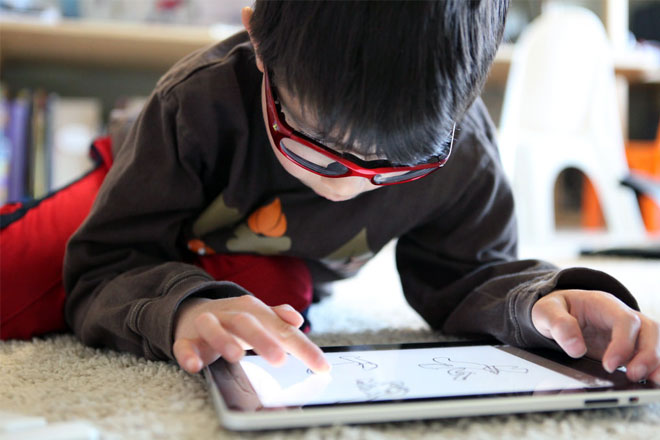
Technology and kids today is a sight you often see. A toddler holding a tablet, an infant with an iPhone in her mouth, what’s new? At one point, parents have great regard over gadgets as a way to pacify their children and as an entertaining and educational tool. But later on, it becomes an alarming sight.
Apparently, a research from Common Sense Media revealed the exceptional increase of children using gadgets such as smartphones and tablets have increased in just two years. From 38% in 2011, the biannual survey revealed that children below eight year old using mobile devices have gone up to 72% in 2013. Conducted on American parents themselves, the survey further showed the increase of toddlers’ gadget exposure from 10% to 38%. With this, the American Academy of Pediatrics discourage the tech use for children under the age of two saying that it changes the nature of childhood.
On the same year, the University of Wisconsin showed that toddlers are likely to respond better to video screens that initiates interaction, thus the pacifying effect of tablets to children. Common Sense Media founder Jim Seyer explains that these digital gadgets are changing the entire childhood lifestyle, even replacing TVs, toys, playgrounds, and storybooks. “One-year-olds are now walking up to TV screens and swiping them because they think they are tablets,” he said. “They are becoming a part of childhood in ways that were almost inconceivable before.”
Kaiser Family Foundation reports that on average, children are spending almost seven and a half hours staring at screens. Moreover, children are now learning how to use gadgets first even before they could walk or even tie their shoe lace. Most parents who give in to their children’s whims can’t see the effects but governments and experts are calling on families to reduce their toddler’s exposure to these gadgets. What are the effects of modern gadgets on children? Here are ten reasons why modern gadgets impede children development:
1. Drastic Brain Development
During the toddler years, the brain triples in size and continues to develop until adult years. Studies have shown that too much gadgets may negatively affect a child’s brain on its functioning, and may even cause attention deficit, cognitive delays, impaired learning, increased impulsivity, and decreased ability to self-regulation. Smart Parenting advises parents to sing, read, and talk to their children than letting them play or watch TV at home.
2. Oh no! Obesity
Children who rely their playing time in front of screens rather than outside in the playgrounds do not burn the calories they take in. One in three U.S. children is obese, which may lead to complications such as diabetes, heart attack, and stroke. Parents must encourage their kids to play more. They must understand that there are many benefits of playing including having their children walk, run, jump and get the exercise they need. Children get fit at the playgrounds and build relationships. The Parents Zone encourages parents to expose their kids more into physical activity then inculcate technology in the later years of their kids for a healthier lifestyle as they grow.
3. Violence
Most parents have noticed that their kids learn to be aggressive due to long hours of playing games in their tablets. Tantrums are the most common form of aggressiveness among toddlers. As they grow older, children who are addicted to computer games are more likely to confront and disobey their elders. So as early as today, instead of relying on tablets to quiet down your little dynamo, opt for coloring books or balls. Take charge of your child today and know more about their behavioral changes with Janet Lehman.
4. Radiation Exposure
According to the 2011 report of the World Health Organization, cellphones and other wireless devices are considered category 2B risk because of their radiation emission. In December 2013, Dr. Anthony Miller from the University of Toronto’s School of Public Health revealed that radio frequency exposure is clearly a threat to children. Healthy Child Healthy World acknowledges this rising radiation issue among children and gives tips on protecting your child from these harmful gadgets.
5. Reduced Interaction
By playing on tablets, they could easily play on their own. In an article published in The New York Times, Dr. Gary Small, author of “iBrain:Surviving the Technological Alteration of the Modern Mind” and director if the Longevity Center at the University of California says that if children spend too much time on technology and less time with people, it hinders interaction and disrupts the normal communication skill development on children. In a family set-up, toddlers often fail to improve on their communication with their parents since they surround themselves with inanimate objects. Others copy and inherit the skill of talking from TV but fail when socializing with other people.
6. Sleep Deprivation
Children who get addicted to playing on their phones or tablets miss out on the needed rest. On other occasions, playing on their tablets becomes their sleeping pill. Without it, they become grumpy and aggressive. The Sleep Lady explains signs whether your toddler is suffering sleep deprivation and tips that you could do to help your toddler have a good night’s sleep.
7. No Exposure To Nature
Gadgets are killing the development of a child. Instead of getting out and learning the ways of the world, running and socializing with other kids, they would rather stay at home and play on their computer. Some parents who are overprotective find technology as helpful since they know that the safety of their child at home is secured. However, they fail to realize that the child is estranged from the natural world of plants, animals, lakes, and sky. Toddlers should be able to throw a ball, hop, skip, jump, run, call a friend by names, among others. Learn more about toddler milestones from Babycentre. This is one of the benefits of playing outside in playgrounds, they learn a lot from interaction, socialization, nature’s beauty, and life itself.
8. Damaged Eyesight
Prolonged exposure at computer screens strains the eyes. Experts say that good eyesight largely depends upon staring at things of varying distances. Research shows that children who are addicted to playing computer games are more likely to develop eye problems as they grow. Vision shares more insight on how computer gaming affects the eyes of children.
9. Addiction
If parents continue to feed the whims of their children, they are allowing addiction to grow. Parents must expose their children to the rest of the world rather than leaving them at home with their gadgets. WebMD explains how computers and gadgets are addictive. Instead of getting them addicted to such technologies, they should be exposed to activities that promote mental, physical, and emotional development.
Despite numerous studies revealing the negative effects of modern gadgets on children, some experts are still positive about the rise of technology. University of Wisconsin assistant professor, Heather Kirkorian says that touch screens could hold educational potential for toddlers. Being an expert on child development, “Kids who are interacting with the screen get better much faster, make fewer mistakes and learn faster. But we’re not turning them into geniuses, just helping them get a little more information,” she explains.
Technology should be encouraged and yet moderated. It is a new generation and kids should get the right amount of knowledge over such advancements. However, parents must perform their responsibility of protecting their child. While there is still time, introduce a new habit of playing outdoors and interesting games with kids of his age.
